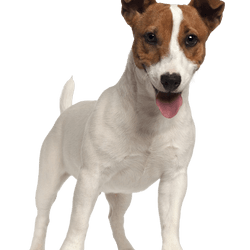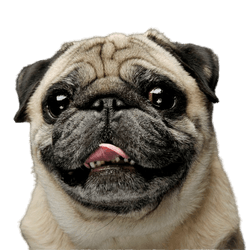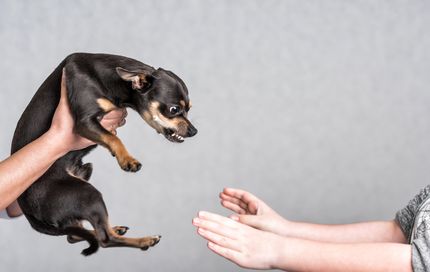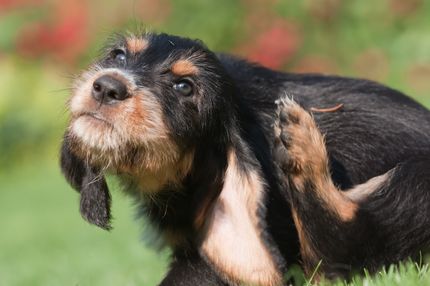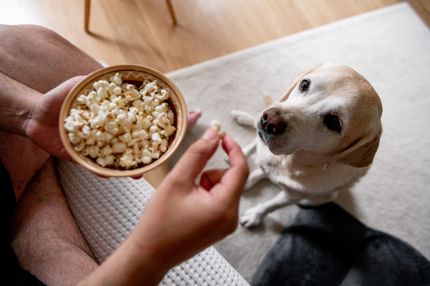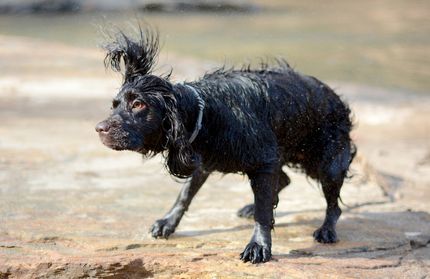Facts & Origin
The Jug - a Jack Russell Terrier and Pug mix
The Jug is a so-called designer or hybrid breed that was created by crossing a Jack Russell Terrier with a Pug. The aim of this mix was to combine the liveliness and energy of the Jack Russell with the playful, people-oriented nature of the Pug - but also to mitigate the health weaknesses of the Pug, such as its short muzzle and breathing problems, with the more robust terrier genetics.
The breeding of this mix probably began in the last two decades, mainly in Great Britain and the USA, as part of the growing trend towards mixed breeds with deliberately selected parents. The name "Jug" is simply a combination of Jack Russell and Pug.
Criticism of the Jug
As with many so-called designer dogs, there is also criticism of the Jug, particularly from animal welfare circles. As the Jug is not an officially recognized breed, there are no binding standards for appearance, health or temperament. This leads to a wide range within a litter - both in terms of appearance and character.
In addition, many Jugs are bred without sufficient health examinations of the parent animals. It is particularly problematic that the Pug, as a brachycephalic breed (with a short muzzle), has known breathing problems, eye and skin diseases, which - depending on the genetic distribution - can also show up in the Jug. If the dog is bred primarily for visual reasons, without consideration for its health, the animal will suffer in the long term.
Another point of criticism is the frequent commercial marketing of crossbreeds as supposedly particularly robust or easy to care for - which is not always true in practice.
Suitability of the Jug
A well-bred Jug can be a friendly, playful and active family dog. The mix of Pug and Jack Russell often results in a dog with a medium temperament: not as energetic as a purebred Jack Russell, but more active than a typical Pug.
The Jug is usually people-oriented, affectionate and adaptable, but can also show a certain stubbornness or obstinacy - typical of both parents. He needs clear rules, patience in training and regular exercise, both physical and mental.
The Jug is well suited to active individuals, couples or families with older children - provided they have the necessary time and willingness to get to grips with the dog's nature. It is rather unsuitable as a pure "lap dog", even if it likes to be close.
As the activity level can vary, you should be aware that even small dogs need to be kept busy and trained consistently before you buy one.
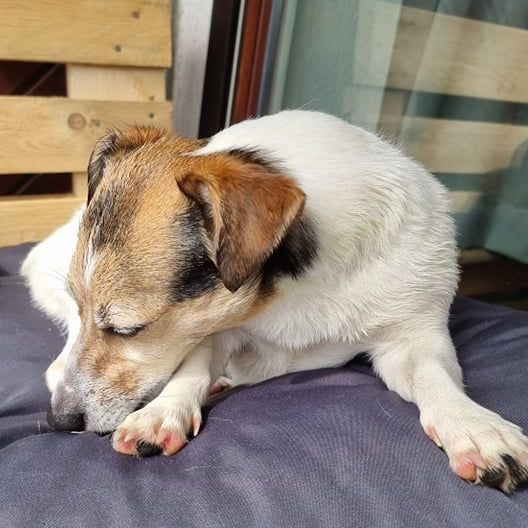
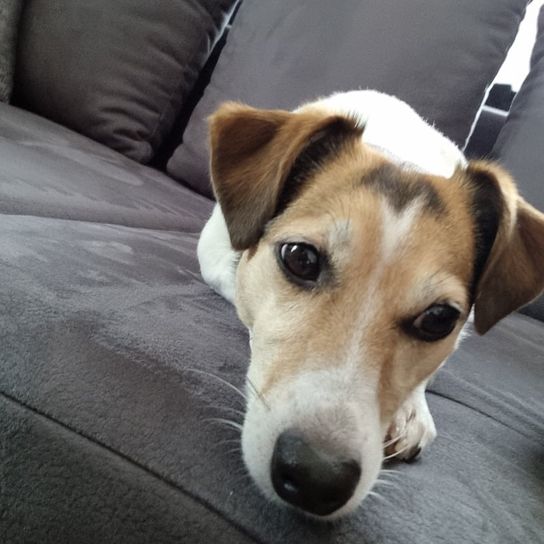
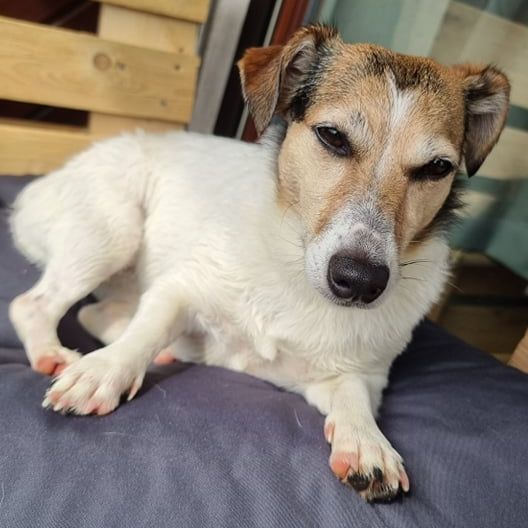
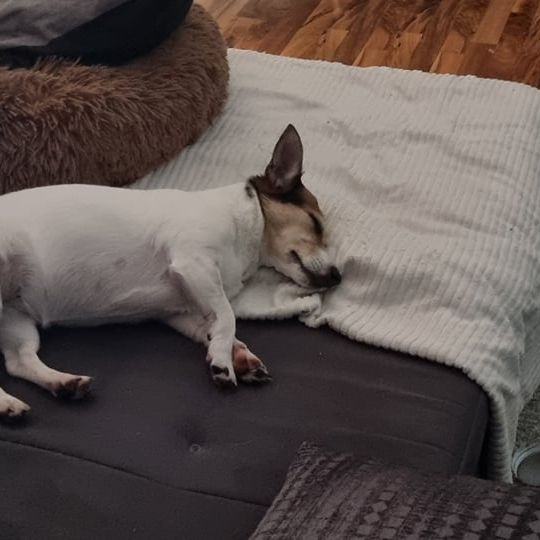
| Alternate Name | Jack Russell Terrier-Pug mix, Jack Pug, Russell-Pug |
| Origin | England - China |
| Life expectancy | 12 - 16 years |
| Care requirements | low-maintenance |
| Activity level | high - low |
| FCI group | not recognised |
| AKC group | not recognised |
| KC group | not recognised |
More Jack Russell Terrier mixes
More Pug mixes
Attitude, character and temperament of the breed
Possible character traits of the Jug
The Jug is generally a lively, curious and people-oriented dog. It often combines the playfulness and affection of the Pug with the energy and intelligence of the Jack Russell Terrier - making it an attentive, entertaining and sometimes headstrong companion.
Many Jugs show a strong attachment to their caregiver, are friendly to people and other dogs, but can also show a territorial or more watchful side, depending on which character traits dominate.
He is often eager to learn, loves to be the center of attention and responds well to positive training. At the same time, however, he can also be stubborn, stubborn or easily bored - a combination that makes consistent but loving training necessary.
With sufficient activity and structure, the Jug proves to be a happy, active family dog that is available for both play and rest.
Character




Possible diseases of the Jug
As the Jug is a mixture of two very different breeds, health characteristics can be inherited from both sides - in a positive or negative sense. The quality of the breeding and the health of the parent animals are therefore particularly important.
Possible diseases in the Jug:
Breathing problems (brachycephaly), when the pug's short snout becomes prominent
Eye diseases, e.g. dry eyes, corneal injuries or protruding eyes
Patellar luxation - a dislocation of the kneecap, common in small dogs
Inflammation of skin folds, especially with a more pronounced pug face
Dental problems, for example due to narrow teeth with a small jaw
Allergies and food intolerances, which can occur in both breeds
In some cases: Heart problems or hip dysplasia
Regular veterinary check-ups, a healthy diet, exercise and good grooming help to prevent many of these problems or detect them at an early stage.
What a Jug can look like
The external appearance of a Jug is not uniform, as it is a mixed breed. Most Jugs are small to medium-sized, around 25 to 35 centimetres tall and weigh between 5 and 9 kilograms.
Their build is often compact and muscular, with a medium leg length. The muzzle is usually longer than that of the purebred pug, but shorter than that of the Jack Russell - which in many cases leads to fewer breathing problems. The ears are usually semi-erect or drooping, the eyes round and expressive.
The coat is usually short to medium length, smooth or slightly wiry, depending on whether the Jack Russell was inherited with a smooth or rough coat. Many color variations are possible: beige, white, brown, black, often with typical terrier markings or also solid-colored with a dark mask, as in the Pug.
Overall, the Jug looks like a charming mixture of the friendly pug and the active terrier - compact, alert and with a lot of personality.
| Fur length | short |
| Fur | rough-haired - flat coated |
| Ear shape | Tilt-ear |
| Tail | lang - stubby |
| Anatomy | sporty, massive, square, hefty |
| Size ♀ | 22 - 38 cm |
| Weight ♀ | 6 - 8 kg |
| Size ♂ | 25 - 38 cm |
| Weight ♂ | 6 - 9 kg |
| Suitable For | - |
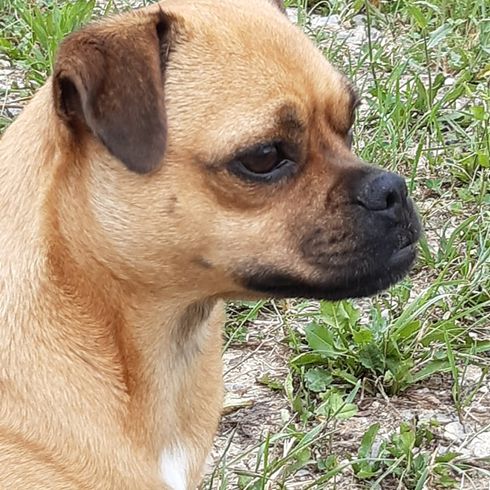
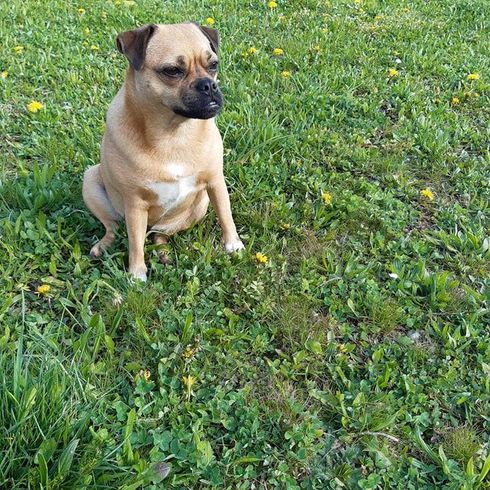

Known Diseases
Cataract
Cataracts are still one of the most common causes of blindness, even in dogs.
Numbness
Often occurs in old age.
Ataxia
Ataxia (from Greek ἀταξία ataxia 'disorder' 'irregularity') is a generic term in medicine for various disorders of movement coordination. Ataxia can occur even when there is no paralysis (paresis), that is, when there is normal muscle strength.
Atopy
Canine atopic dermatitis or environmental allergy is characterized by itching with scratching, biting, and rubbing of the face, paws, and belly
Dermatophytosis
Dermatophytosis (synonym dermatophytosis, from ancient Greek τὸ δέρμα derma, German 'skin' and ancient Greek φυτόν phyton, German 'plant') or tinea (Latin for 'woodworm', 'moth') is a skin fungal disease caused by specific fungi (dermatophytes).
extreme whiteness
May be associated with some other diseases.
Legg-Calve-Perthes
Legg-Calvé-Perthes disease (aseptic femoral head necrosis) is a growth disorder of the femoral head.
Dislocations
Lenticular and patella luxation occur in some breeds and affect the eye.
Myelopathy
Degenerative myelopathies of dogs are a series of slowly progressing neurological diseases associated with destruction of the spinal cord. These diseases are associated with slowly progressive movement disorders of the hindquarters.
Hip dysplasia (HD)
Hip dysplasia (HD) is a genetic condition in dogs where the hip joint is not shaped properly. This leads to pain, stiffness and restricted movement.
Denture malocclusions
Malocclusions of the dentition often occur in dogs with short muzzles.
Shortness of breath
Difficult breathing can be recognized by the dog's rattling and sometimes accelerated breathing rate.
Overweight
Often, unfortunately, the dogs very much under excess weight. But the dogs themselves are never to blame!
Heart disease
Can occur frequently in dogs and can sometimes be treated with medication.
Breathing problems
Dogs with shortened muzzles can often experience respiratory problems.
FAQ
-
The size of a Jug (Jack Russell Terrier and Pug mix) can range from small to medium. The average weight is between 7 and 10 kg.
-
The life expectancy of a Jack Russell Terrier and Pug mix is between 12 and 15 years.
-
The exercise requirements of a Jack Russell Terrier and Pug mix are moderate. They need daily walks or playtime.
-
The care requirements of a Jug are moderate. They need to be brushed weekly and bathed if necessary.
-
The temperament of a Jack Russell Terrier and Pug mix can vary depending on which parent breed they more closely resemble. As a rule, however, they are energetic, playful and affectionate dogs.
